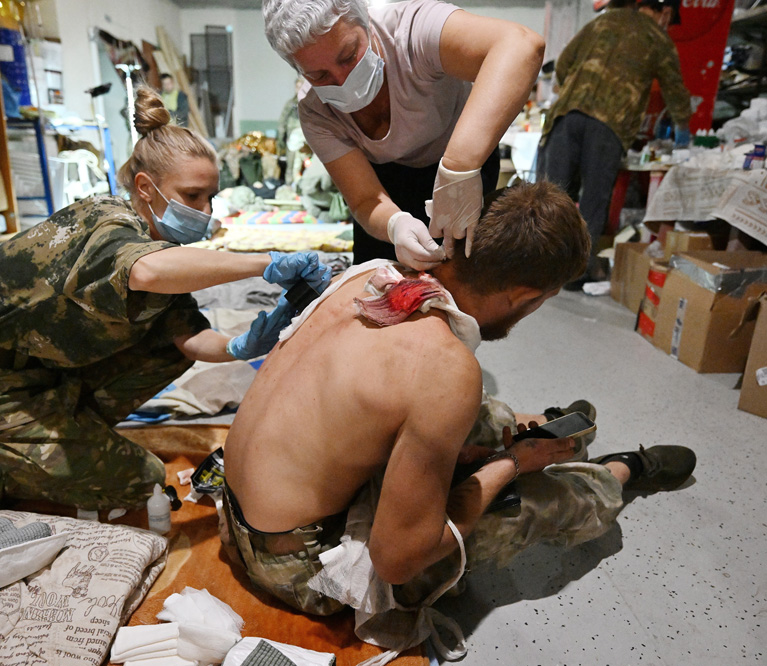
The fight against resistant bacteria
Smart antibiotics will save us
When antibiotic drug ceftazidime-avibactam was introduced in 2015, the medical world welcomed it with open arms. This powerful drug offered hope in the fight against tenacious infections. It quickly became a staple for the treatment of complex abdominal infections and hospital-related cases of pneumonia, conditions that can often be fatal.
Unfortunately, the elation was short-lived. Less than a year after it was introduced, the first reports of resistance came in. What was initially considered a rare occurrence has since become a common issue. Bacteria’s resistance to this antibiotic spread quickly, and ceftazidime-avibactam’s initial promise is now a harsh reminder of the resistance crisis.
Retired professor of biomedical engineering Henk Busscher with the UMCG has noticed that bacteria seem to become resistant to antibiotics more rapidly. ‘For some antibiotics, it takes bacteria only one or two years.’
New techniques
The large-scale use of new antibiotics is to blame for this, and the consequences are severe. ‘The fact that we can only use antibiotics for so long without bacteria developing a resistance means that corporations are becoming increasingly less interested in investing in new antibiotics.’ Without working antibiotics, humanity is in serious trouble.
Corporations are becoming increasingly less interested in investing in new antibiotics
That’s why Busscher says we should stop producing drugs to which we already know bacteria can easily build resistance. ‘We’ll just be stuck in the same loop forever.’
Instead, we should be looking for new methods; drugs that have been shown to elicit less of a resistant response in bacteria. One solution is a technique that Busscher has studied himself, which combines antibiotics and nanoparticles.
Nanoparticles
‘Nanoparticles are incredibly small particles that have a comparatively large surface area’, Busscher explains. ‘That gives them some interesting properties.’
One of these properties is their ability to produce reactive oxygen – a type of oxygen that quickly forms chemical reactions, making it harmful to cells. When applied to infections, the combination of reactive oxygen and antibiotics can kill bacteria. ‘The oxygen creates holes in the cell wall, which the antibiotics use to enter the cell.’
Busscher’s research has also shown that bacteria do not become resistant to reactive oxygen. ‘Although obviously, we don’t yet know about the consequences of large-scale use.’
Opportunities
Busscher is also convinced that the combination of nanoparticles and antibiotics can create many opportunities. Especially because there are so many different types of nanoparticles. ‘Some can form a layer around the antibiotics to prevent bacteria from recognising them’, he says. ‘This allows the antibiotics to more easily enter the bacteria.’
The current crisis is relatively mild so people’s opinions vary greatly
There are also nanoparticles that can independently kill bacteria, which means they don’t need to even be combined with antibiotics. ‘Then there are particles that can detect infections with the aid of characteristics specific to the environment around infections, such as acid levels.’ The nanoparticles use the acidity to change their own characteristics in order to clean up the infection.
But there are also quite a few variables that make it harder for the particles to detect infections. Something as simple as exercise can change the acid levels around infections, making the nanoparticles less effective. That’s why researchers are looking for unique markers. ‘One option is a lower concentration of oxygen around the infection, but it will probably come down to a unique combination of characteristics’, says Busscher.
Obstacles
It could however take a while before his research can actually be used, since there is still a lot of debate surrounding the switch to new methods of fighting bacterial infections. ‘During crisis situations such as the Second World War, people were much more open to alternative developments of pharmaceutical substances’, Busscher explains. ‘The current antibiotics resistance crisis is relatively mild, so people’s opinions on it vary greatly.’
They have shown it works on a mouse but then move on to a different study
This could change however, especially now that antibiotics resistance is found a lot at the front in Ukraine, which could be fatal to the injured soldiers there.
Another obstacle, he says, is that researchers sometimes have a hard time deviating from methods they’ve been using for years. ‘They don’t like it. But I don’t think we’re on the right track anymore.’
Develop further
The biggest challenge, however, is to ensure that researchers actually take their research far enough to be tested on human beings. They often don’t do that. ‘If you look at Web of Science, you’ll find that five to seven thousand articles about new anti-bacterial particles were published in the past five years’, says Busscher.
While they all claim to have found ‘promising opportunities’ for fighting antibiotic-resistant bacteria in people, none of the studies were followed up on. ‘They’ll have shown it works in a lab or on a mouse, but then they move on to a different study.’
It’s important, therefore, to scour the thousands of studies to find the ones with the greatest potential and develop those further. It takes a long time before drugs are safe to use on people, and you can’t go through a process that lengthy for every single study.
As such, the emphasis should lie on what should be done to safely test these particles on human beings. ‘I just want to get together to see how we can apply this to people and for researchers to stop always developing something new, only move on to something new once they’ve published their findings.’